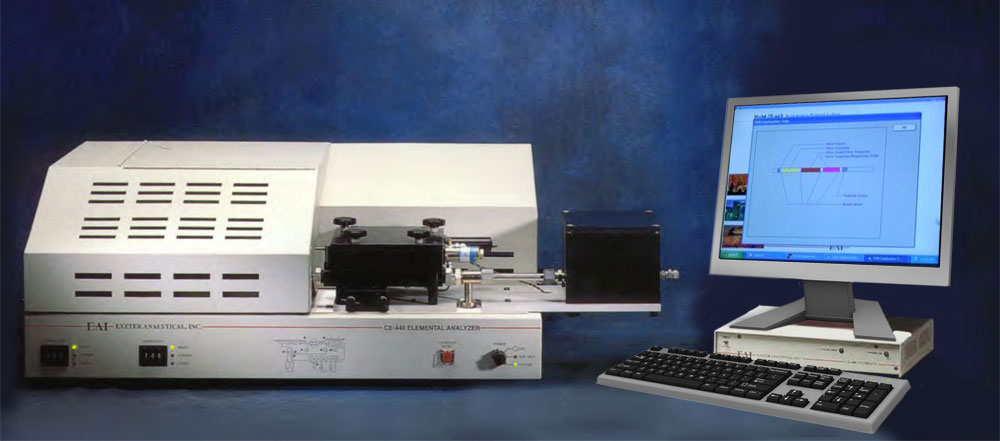CE440 Elemental Analyser
Theory of Operation
The samples to be analysed are weighed into disposable tin or aluminum capsules. The sample is injected into a high temperature furnace and combusted in pure oxygen under static conditions.
 Please see Application Note 232 for a more detailed discussion.
Please see Application Note 232 for a more detailed discussion.
At the end of the combustion period, a dynamic burst of oxygen is added to ensure total combustion of all inorganic and organic substances. If tin capsules are used for the sample container, an initial exothermic reaction occurs raising the temperature of combustion to over 1800°C.
The resulting combustion products pass through specialised reagents to produce from the elemental carbon, hydrogen, and nitrogen; carbon dioxide (CO2), water (H2O) and nitrogen (N2) and N oxides. These reagents also remove all other interferences including halogens, sulfur, and phosphorous. The gases are then passed over pure copper wire to remove excess oxygen and to reduce oxides of nitrogen to elemental nitrogen. After this stage the gases enter a mixing chamber to ensure a homogeneous mixture at constant temperature and pressure.
The mixture then passes through a series of high-precision thermal conductivity detectors, each containing a pair of thermal conductivity cells. Between the first two cells is a water trap. The differential signal between the cells is proportional to the water concentration, which is a function of the amount of hydrogen in the original sample. Between the next two cells is a carbon dioxide trap for measuring carbon. Finally, nitrogen is measured against a helium reference.
Sulfur is measured separately, as sulfur dioxide, by replacing the combustion and reduction reagents. Oxygen is also measured separately by pyrolysis in the presence of platinized carbon. The oxygen is finally measured as carbon dioxide. Both analyses are easily carried out and require a simple change of reagent tubes. In this way the analysis of either sulfur or oxygen is not compromised by trying to determine several elements at the same time. Parameters and reagents are optimised for the element undergoing analysis.
